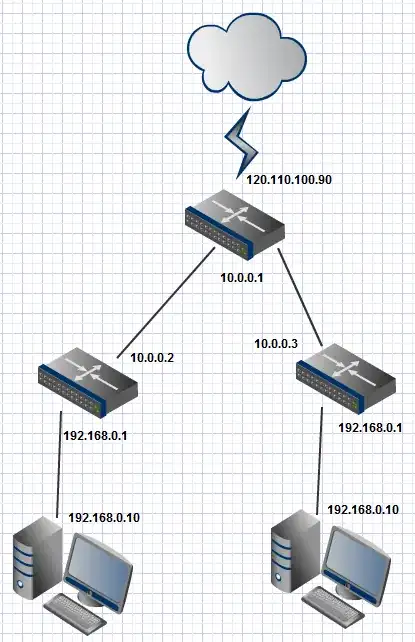Background: I'm working on a hole punching service with UDP, and in order to differentiate users under the same public IP, I've thought of making the user also send their local IP. That way, I killed 2 birds with 1 stone: Clients are uniquely identified, while also making the server offer users to establish a direct connection (if possible), rather than hairpinning it.
All seemed perfect (especially the unique identification), until I realized this is possible:

So here's the actual question: How widespread are such situations, if they are even used, and where?